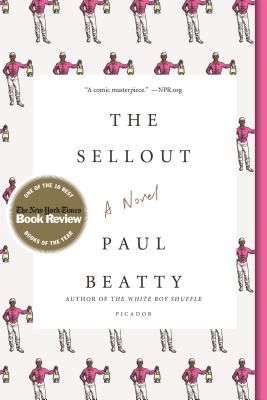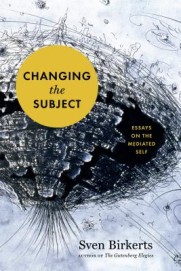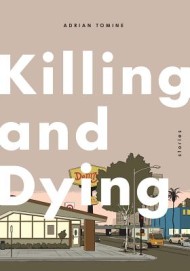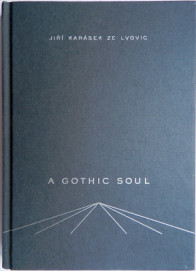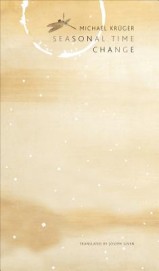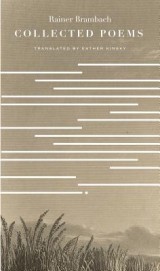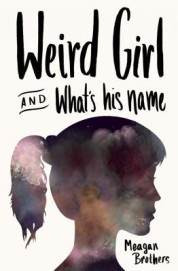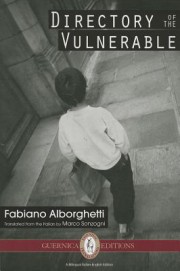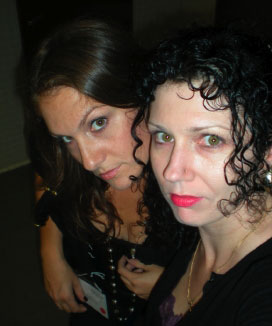
interviewed by Sarah Suzor
E.B. White once wrote, “It is not often someone comes along who is a true friend and a good writer.” The line is about his immortal character Charlotte, but it could easily apply to Jessica Piazza and Jill Alexander Essbaum; their story of writerly friendship supersedes the possible ego of competition, and instead grows the relationship they share into one of appreciation, adoration, and respect. This is all the more remarkable as both are highly decorated writers: Piazza is the author of a prize-winning debut collection of poems, Interrobang (Red Hen Press) and a subsequent chapbook, This is not a sky (Black Lawrence Press, $8.95), and she has boldly taken up the Poetry Has Value initiative, which contemplates and perhaps re-defines the worth (literary and figuratively) of contemporary poetry. Essbaum is the author of several acclaimed poetry collections and her work has appeared in The Best American Poetry, but has recently seen her debut novel Hausfrau (Random House, $16) noted as a New York Times Best Seller, mentioned in People magazine, and frequently described as a modern-day Madame Bovary.
In the interview below, Essbaum and Piazza explain more of their shared story, each from their own perspective.
Sarah Suzor: How did you two meet?
Jill Alexander Essbaum: We met at Curra’s in Austin. Craig Arnold called and asked me to come to meet his girlfriend Rebecca Lindenberg (who I also love beyond all reason and compare), but because it was Craig, it was a last-minute invite (I sure do miss that guy) and I almost didn’t go. And then we hit it off. Our first girl date was on the back patio at Austin Java.
We met because we had to. It was foreordained.
 Jessica Piazza: Serendipitously, of course. Mostly because we met through a dear mutual friend, the poet Craig Arnold (who died several years ago in an accident in Japan), although we almost didn’t come to the fateful lunch that ultimately set the scene for our origin story—Jill wasn’t that into coming down to South Austin, and I was in a problematic relationship that had me cancelling plans often, so it could have been otherwise. But Craig and his partner, the indomitable Rebecca Lindenberg, were in town for a few days and insisted Jill and I meet. Or maybe they just wanted to see both of us and it was convenient. Either way, it was kismet. Over margaritas and chips at Curra’s Grill, Jill and I realized we had a lot in common, not the least of which is a really offbeat sense of humor and a love of joyous trickery and game-playing in poetry. I’m not sure how this Brooklyn bruiser immediately clicked with a small-town Texas girl, but we did. And over the decade plus since then we’ve become closer than I would have imagined—we’ve become family. Even after Jill moved to Switzerland and I left Texas, we were still family, even more so maybe—talking all the time, helping each other through everything. Jill spent every Thanksgiving here for years; I would come see her at UC Riverside Palm Desert every residency she did there. Family.
Jessica Piazza: Serendipitously, of course. Mostly because we met through a dear mutual friend, the poet Craig Arnold (who died several years ago in an accident in Japan), although we almost didn’t come to the fateful lunch that ultimately set the scene for our origin story—Jill wasn’t that into coming down to South Austin, and I was in a problematic relationship that had me cancelling plans often, so it could have been otherwise. But Craig and his partner, the indomitable Rebecca Lindenberg, were in town for a few days and insisted Jill and I meet. Or maybe they just wanted to see both of us and it was convenient. Either way, it was kismet. Over margaritas and chips at Curra’s Grill, Jill and I realized we had a lot in common, not the least of which is a really offbeat sense of humor and a love of joyous trickery and game-playing in poetry. I’m not sure how this Brooklyn bruiser immediately clicked with a small-town Texas girl, but we did. And over the decade plus since then we’ve become closer than I would have imagined—we’ve become family. Even after Jill moved to Switzerland and I left Texas, we were still family, even more so maybe—talking all the time, helping each other through everything. Jill spent every Thanksgiving here for years; I would come see her at UC Riverside Palm Desert every residency she did there. Family.
SS: How would your writing careers have been different without knowing each other?
JAE: It would be sad and boring and I wouldn’t be publishing this novel. Really. She facilitated the meeting of my first agent, and preceding even that, she was my first and best reader. We were each other’s dates to the Westchester Poetry Conference whenever we went which made it less awkward for us (and more awkward for everyone else). She gave me license to be looser with my tempo and meter, and I’d like to think I taught her the freedom to rhyme weird shit.
JP: I know I wouldn’t be as brave—I wouldn’t have the courage to forget what the rest of the world thinks and just write what makes me happy. In practical terms, I certainly write more because of Jill’s example. Our processes are pretty much the opposite—she writes all the time and is incredibly painstaking, while I write in fits and starts and produce a truckload when I’m in the zone—but we always encourage each other and keep tabs on our output. Jill is my very best reader. We sometimes collaborate on poetry exercises and we’ve given each other lines; there are poems I’ve published that I’m pretty sure contain lines she originally wrote, and vice versa, but we don’t really keep track anymore.
It was also Jill who made me love rhyme even more than I already did. I was a meter geek when we met, but I was into a Marilyn Hacker style of subtle rhyme, the kind where in certain poems you might not even notice it. Jill on the other hand was bold—she couldn't care less when she was too much on the page—and I was dazzled by that, so I took her example and ran with it. We both rhyme like bulls in china shops now, and I love it.
Although, I just read back and saw you asked how our careers would be different, not our writing. And it’s hard to say, except for the fact that Jill has been my biggest fan and supporter. Just ask anyone in the industry she knows if she’s talked me up to them at one point or another; chances are yes. I do the same for her, of course, but she’s been doing this longer than I have and is further in her career, so I’m especially grateful. And the truth is, it’s just really good (for my heart and career) to have someone so damn talented rooting for me.
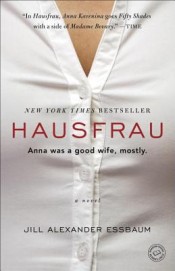 SS: Jill, your new novel Hausfrau is getting a lot of attention. How do you feel about the hype?
SS: Jill, your new novel Hausfrau is getting a lot of attention. How do you feel about the hype?
JAE: It terrifies me. It delights me. It makes me miss my dead parents—I want to slap it under a magnet on their refrigerator under my last report card. I want the world to love it. I want to succeed. But if I don’t, I want to be ok with that. And the truth is, I kind of am. The endgame is the art, right? I’ve come farther than most. I’m entirely humbled. I’m gratified. I’m grateful.
SS: Jessica, what was your reaction when you found out Jill’s book was picked up by Random House?
JP: I started jumping up and down and screaming. It’s funny, I introduced Jill to the agent that picked up the book, and I had a really good feeling that he’d want to take it—though neither of us could have imagined that the first editor who read it would buy it, and that the editor would be David Ebershoff, one of the best in the business. But I wasn’t really surprised; the book is that good. I was just happy. It’s a total blessing, and no one deserves it more than Jill does.
SS: You both participate in jobs outside of creative writing. What are your most exciting endeavors right now?
JAE: I was married about a year ago and I adore this husband more than I adore cake. More than icing, even. (And you can ask Jessie: I fucking love icing.) Our life together is one of those aforementioned exciting endeavors. Every day he makes me laugh like an audience member in a Redd Foxx concert: heartily, inappropriately, with wild, nostalgic, abandon.
JP: I’m teaching a lot and running book clubs throughout Southern California, so I’m busy. I’m also promoting Interrobang and This is not a sky, so that takes time. I’m trying to conceptualize my next book, but I'm not sure where I’m going with it yet. Jill says I should write a novel. We’ll see.
I'm really pleased that my second full-length collection is coming out this April with Red Hen Press. It's called Obliterations, and it's a sequence of erasure poems that use articles from the New York Times as their source texts. I co-wrote it with a dear friend, Heather Aimee O'Neill, who is another example of the amazing fortune I've had in the strong, talented, female friend department.
Besides that, the thing I'm most excited about right now is this blog I’ve started called “Poetry Has Value.” I took a pledge that in 2015 I’d only submit poetry to paying markets and that I’d blog about the experience. It was just a crazy experiment to see what would happen if I insisted that poetry—a genre that gets a lot of respect but not much compensation—could make money just like journalism or fiction or art can. (And yes, I know it’s hard to make money at any art. I’m just questioning the rote idea that success in other genres might eventually lead to payment but poetry hardly ever does.) Anyway, the site became much bigger than just me; amazing guest bloggers like Terry Wolverton and Sandra Beasley have weighed in on the subject, and I started interviewing the editors and publishers of paying literary magazines specifically about how they make it work. I’m hoping that it serves as a resource for people interested in switching to a paying model, and illustrates that in some (though definitely not all) cases it can be done. I’ve also created a public, editable spreadsheet of poetry journals that pay writers so poets can consult it (and add to it!) at will. It’s really become a community where people can discuss poetry, money, and worth, and I'm proud to help lift what I see as a taboo against talking about poetry in terms of money. The site is at www.poetryhasvalue.com, for those interested.
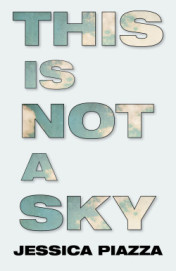 SS: Jessica, for you, what is the most intriguing aspect of your new chapbook of ekphrastic poems, This is Not a Sky?
SS: Jessica, for you, what is the most intriguing aspect of your new chapbook of ekphrastic poems, This is Not a Sky?
JP: It was exciting to let the art inform my style. This work, unlike Interrobang, isn’t formal at all, but somehow it still . . . sounds formal? I mean that it sounds a lot like me. But I was able to play all sorts of games in the poems that I never would have because the artists’ styles called for it. So the poem based on the Escher drawing is circular and repetitive; the poem based on the Twombley painting is full of scrawl. And all of them have a QR code, so the reader can scan it with a smart phone and go directly to the art, which I love. Most readers won’t, I know, but it’s a fun option to have.
SS: Jill, in your opinion, what’s Jessica’s signature writing style?
JAE: Formal but not formulaic; classic in her consideration of themes, explosively innovative in her treatment of them; marked by a loping, subtle iamb; zig-zag-ey, which is to say unexpected—it’s like you read it the way one runs away from an alligator; fun but never entirely frivolous; with a sadness that underscores even the lightest, brightest moments. Original. Of unknown origin. Imported. Important.
SS: Jessica, in your opinion, what’s Jill’s signature writing style?
JP: Finely-tuned, perfectly-crafted, over the top word lust. She’s a novelist that poets can truly get behind and a poet that really appeals to the everyday reader, too. She’s high-falutin’ and yet somehow really down to earth. And punny. She’s all sorts of punny.
SS: Jill, for you, what is the most intriguing aspect of your new book, Hausfrau?
JAE: Intriguing to me? I’m listening to the audio book as I type this, and it’s a surreal experience, as if this is someone else’s book. I’ll think: Holy crap—did I write that??? And then: Huh. I guess I did write that. Damn, girl. Good on you. And then: Wow, this is a lot dirtier than I thought it was.
For others, I can only hope what intrigues them is the way I’ve told the story. It’s really a quite simple story, but I’ve paced it with deliberation and forethought. My wish is that I’ve told it well.
SS: Jessica, can you explain a bit more about “Poetry Has Value”?
JP: I can say that it wasn’t about creating a manifesto. I don’t insist that every journal should pay poets—at least not now, because it isn’t possible. I just wanted to do this experiment because I thought it would be evocative for others, and that it might start a conversation that’s sorely needed. But the most important thing I can get across is this: people say there aren’t any readers of poetry, and that’s not true. There aren’t enough, sure, but there are readers. And if poetry lovers subscribed to even three or four journals a year, the whole industry would be different. We need to support what we love and what we enjoy.
This experiment, far from being about me making a living (which I won’t, I promise), is really about asking all of us to consider why we don’t expect to get paid for the hard work we do creating our art, and in what ways we’re complicit in these industry-wide issues.
SS: Jill, what’s the most drastically different part about writing fiction, as opposed to poetry?
JAE: I had to sit still longer, but that’s it. This is a very organized novel; it’s structured in the way that something like a traditional poem might be structured. There’s a “turn” two-thirds of the way into the book. The timeline lasts exactly three months, and each section lasts precisely one. Each month features a birthday party. I wrote this book exactly the same way I write my poems: ain’t no word here that ain’t been vetted. None. All decisions have been entirely considered. All. Were all choices correct? That’s up for anyone’s interpretation. But I relied on the economy of language that poetry demands, and the necessity of choice and decision-making that poetry calls for.
SS: Jill, what would be Jessica’s go-to karaoke song?
JAE: Woof. We listen to such different music I’m not sure I could answer that. But what if I suggest one? How about the Cameo classic “Word Up”?
SS: Jessica, what would be your go-to karaoke song?
JP: “When You’re Good to Mama” from Chicago, or “Beautiful Girls” by Sean Kingston. (Don’t knock the latter until you’ve heard my version!)
SS: Why do you feel it’s important to share a bond as writers as well as friends? Is there something particularly special about admiring each other as people as well as admiring each others’ creations?
JAE: Because I love her and trust her and know her. And we don’t always agree; the tension between our work—not the sameness—calls it into question, and makes for the best writing. After a point I think writing groups are a good way to avoid putting your work out into the world; they are by turns congratulatory and disheartening, and you often wind up writing something that pleases everyone, rather that something that pushes you to go beyond yourself. Too, Jessie and I have similar but not perfectly matched aesthetics. She’s introduced me to poets I didn’t know. For example, she turned me on to Eric McHenry (who in turn pointed me to Richard Kenney), and Albert Goldbarth, and she convinced me to second-chance Ben Lerner, which I’m glad I did. For my part—and Jess, forgive me if I’m wrong here, you know I have the forgetfuls—I think I was the one who brought her to Harvey Hix and Evie Shockley and Atsuro Riley. And then there are those beautiful moments where we come to love poets separately but at the same time—notably, Kate Greenstreet vis-à-vis her masterpiece, The Last 4 Things. The day we discovered that we have the same favorite all-time poem was the day I knew I’d love her forever. (I won’t say what it is.)
I’m a better person and a better writer and I hope a better friend because of her.
JP: Yes. There’s something special. I have a few close friends who are also amazing poets and wonderful readers for me (Rebecca Lindenberg, Elizabeth Cantwell, Cody Todd and Joshua Rivkin come to mind immediately), and the respect I have for them as people is entirely more important than my admiration of their craft (which is substantial, trust me.) With Jill, we realized we liked each other as people before we even read each other’s poems, and though we both really loved each other’s work from the beginning, I think our styles have developed together—almost the way poets of the past who were part of a given school might influence each other. That kind of deep influence, the kind that isn’t accompanied by anxiety, requires an even deeper friendship. So I feel lucky to have my sister Jill. The fact that she’s insanely talented is just gravy.
Click here to purchase Hausfrau at your local independent bookstore

Click here to purchase This is not a sky at your local independent bookstore

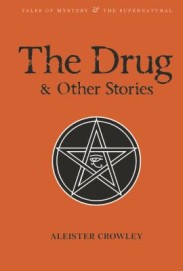 Aleister Crowley
Aleister Crowley
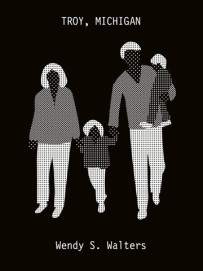

 Jessica Piazza: Serendipitously, of course. Mostly because we met through a dear mutual friend, the poet Craig Arnold (who died several years ago in an accident in Japan), although we almost didn’t come to the fateful lunch that ultimately set the scene for our origin story—Jill wasn’t that into coming down to South Austin, and I was in a problematic relationship that had me cancelling plans often, so it could have been otherwise. But Craig and his partner, the indomitable Rebecca Lindenberg, were in town for a few days and insisted Jill and I meet. Or maybe they just wanted to see both of us and it was convenient. Either way, it was kismet. Over margaritas and chips at Curra’s Grill, Jill and I realized we had a lot in common, not the least of which is a really offbeat sense of humor and a love of joyous trickery and game-playing in poetry. I’m not sure how this Brooklyn bruiser immediately clicked with a small-town Texas girl, but we did. And over the decade plus since then we’ve become closer than I would have imagined—we’ve become family. Even after Jill moved to Switzerland and I left Texas, we were still family, even more so maybe—talking all the time, helping each other through everything. Jill spent every Thanksgiving here for years; I would come see her at UC Riverside Palm Desert every residency she did there. Family.
Jessica Piazza: Serendipitously, of course. Mostly because we met through a dear mutual friend, the poet Craig Arnold (who died several years ago in an accident in Japan), although we almost didn’t come to the fateful lunch that ultimately set the scene for our origin story—Jill wasn’t that into coming down to South Austin, and I was in a problematic relationship that had me cancelling plans often, so it could have been otherwise. But Craig and his partner, the indomitable Rebecca Lindenberg, were in town for a few days and insisted Jill and I meet. Or maybe they just wanted to see both of us and it was convenient. Either way, it was kismet. Over margaritas and chips at Curra’s Grill, Jill and I realized we had a lot in common, not the least of which is a really offbeat sense of humor and a love of joyous trickery and game-playing in poetry. I’m not sure how this Brooklyn bruiser immediately clicked with a small-town Texas girl, but we did. And over the decade plus since then we’ve become closer than I would have imagined—we’ve become family. Even after Jill moved to Switzerland and I left Texas, we were still family, even more so maybe—talking all the time, helping each other through everything. Jill spent every Thanksgiving here for years; I would come see her at UC Riverside Palm Desert every residency she did there. Family.


